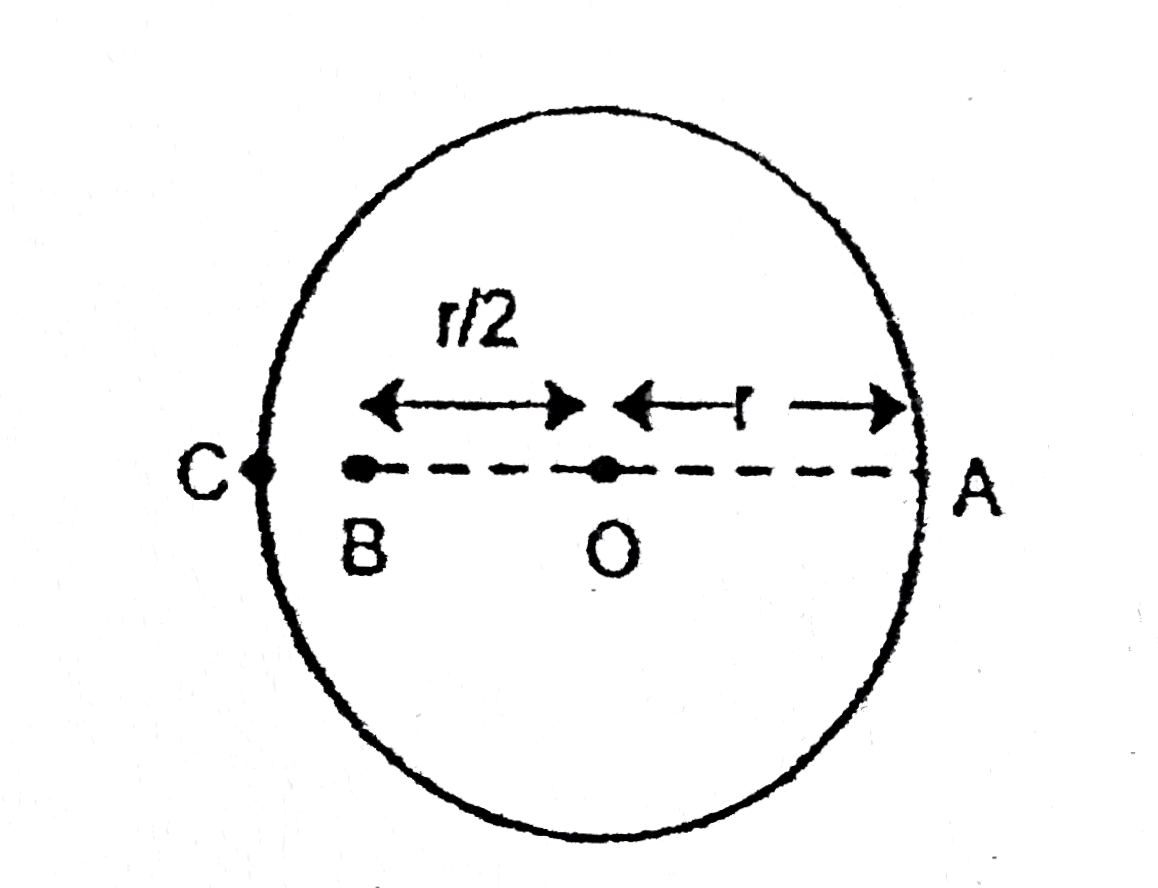A particle is moving in a circular orbit of radius r1 with an angular velocity ω1. It jumps to another circular orbit of radius r2 and attains an angular velocity ω2. IF r2=0.5r1 and assuming that no external torque is applied to that system, then, the angular velocity ω2 is given by
ω2=4ω1
ω2=3ω1
ω2=2ω1
ω2=ω1
The correct Answer is:A
To solve the problem, we need to use the principle of conservation of angular momentum. The angular momentum of a particle moving in a circular orbit is given by the formula:
L=m⋅r2⋅ω
where:
- L is the angular momentum,
- m is the mass of the particle,
- r is the radius of the circular orbit,
- ω is the angular velocity.
1. Identify Initial and Final Conditions:
- Initial radius: r1
- Initial angular velocity: ω1
- Final radius: r2=0.5r1
- Final angular velocity: ω2
2. Write the Expression for Initial Angular Momentum:
The initial angular momentum L1 when the particle is at radius r1:
L1=m⋅r21⋅ω1
3. Write the Expression for Final Angular Momentum:
The final angular momentum L2 when the particle is at radius r2:
L2=m⋅r22⋅ω2
4. Set Initial and Final Angular Momentum Equal:
Since no external torque is applied, we can set the initial and final angular momentum equal:
L1=L2
Therefore,
m⋅r21⋅ω1=m⋅r22⋅ω2
5. Cancel the Mass:
The mass m appears on both sides of the equation, so we can cancel it out:
r21⋅ω1=r22⋅ω2
6. Substitute r2:
Substitute r2=0.5r1 into the equation:
r21⋅ω1=(0.5r1)2⋅ω2
Simplifying the right side:
r21⋅ω1=0.25r21⋅ω2
7. Cancel r21:
Since r21 is common on both sides, we can cancel it:
ω1=0.25⋅ω2
8. Solve for ω2:
Rearranging gives:
ω2=ω10.25=4⋅ω1
Final Result:
Thus, the angular velocity ω2 is given by:
ω2=4⋅ω1
- L is the angular momentum,
- m is the mass of the particle,
- r is the radius of the circular orbit,
- ω is the angular velocity.
- Initial radius: r1
- Initial angular velocity: ω1
- Final radius: r2=0.5r1
- Final angular velocity: ω2
The initial angular momentum L1 when the particle is at radius r1:
L1=m⋅r21⋅ω1
The final angular momentum L2 when the particle is at radius r2:
L2=m⋅r22⋅ω2
Since no external torque is applied, we can set the initial and final angular momentum equal:
L1=L2
Therefore,
m⋅r21⋅ω1=m⋅r22⋅ω2
The mass m appears on both sides of the equation, so we can cancel it out:
r21⋅ω1=r22⋅ω2
Substitute r2=0.5r1 into the equation:
r21⋅ω1=(0.5r1)2⋅ω2
Simplifying the right side:
r21⋅ω1=0.25r21⋅ω2
Since r21 is common on both sides, we can cancel it:
ω1=0.25⋅ω2
Rearranging gives:
ω2=ω10.25=4⋅ω1
Thus, the angular velocity ω2 is given by:
ω2=4⋅ω1
Topper's Solved these Questions
- COMPETITION CARE UNITBOOK - ICSECHAPTER - COMPETITION CARE UNITEXERCISE - NDA EXAM QUESTIONS
55 Videos
- CIRCULAR MOTION BOOK - ICSECHAPTER - CIRCULAR MOTION EXERCISE - MODULE 2 (FROM ROTATIONAL KINETIC ENERGY , WORK ,POWER)
24 Videos
- DIMENSIONSBOOK - ICSECHAPTER - DIMENSIONSEXERCISE - SELECTED PROBLEMS (FROM CONVERSIONS OF ONE SYSTEMS OF UNITS INTO ANOTHER)
9 Videos
Similar Questions
Knowledge Check
The period of a satellite in a circular orbit of radius R is T. What is the period of another satellite in a circular orbit of radius 4 R ?
A4 TBT/8CT/4D8 TA particle of charge q and mass m moves in a circular orbit of radius r with angular speed w the ratio of the magnitude of its magnetic moment to that of its angular momentum depends on
Aw and qBw, q and mCq and mDw and mThe time period of an artificial satellite in a circular orbit of radius R is 2 days and its orbital velocity is v0. If time period of another satellite in a circular orbit is 16 days then
Aits radius of orbit is 4R and orbital velocity is v0Bits radius of orbit is 4R and orbital velocity is v02Cits radius of orbit is 2R and orbital velocity is v0Dits radius of orbit is 2R and orbital velocity is v02
A particle of charge q and mass m moves in a circular orbit of radius r with angular speed ω. The ratio of the magnitude of its magnetic moment to that of its angular momentum depends on
View SolutionA particle of charge q and mass m moves in a circular orbit of radius r with angular speed ω. The ratio of the magnitude of its magnetic moment to that of its angular momentum depends on
View SolutionIf 2 kg mass is rotating on a circular path of radius 0.8 m with angular velocity of 44 rad/sec. If radius of the parth becomes 1 m, then what will be the value of angular velocity?
View SolutionA particle is moving around a circular path with uniform angular speed (x) . The radius of the circular path is (r). The acceleration of the particle is:
View SolutionA particle moves in a circular path of radius (R). If centripetal force (F) is kept constant but the angular velocity is double, the new radius of the path will be
View Solution

